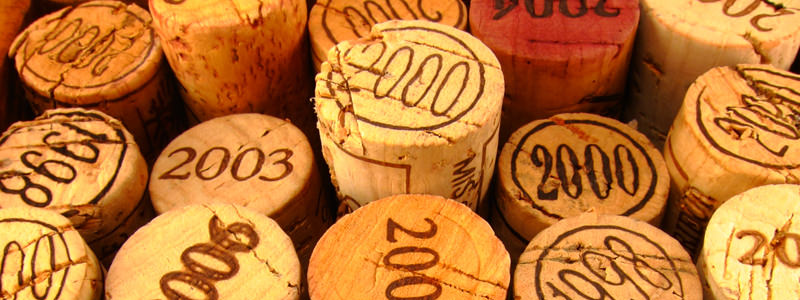You’re at your wine shop, grocery store or local restaurant, and there right in front of you on the bottle’s label or next to the wine’s name on the menu is a date, a year to be specific. You think to yourself, what does this year printed on the label actually mean? Does it represent the year the grapes were harvested, or the year the wine was released on the market? And why should you care?
A wine’s vintage represents the year in which the grapes that were used to make that wine were grown and harvested. It doesn’t have anything to do with the year the wine finally comes to the market, but instead the year the ingredients in the bottle were grown.
Vintage has been labeled on the bottle almost since we began using the bottle as a vessel to store wine and for just as long, wine writers, collectors and makers have all been trying to identify which vintages were better or worse than others. It’s this categorization that causes wines from certain vintages to be astronomically priced compared to other years.
Just as with any other crop, there are years in any specific wine region where the weather and climate will just be better for growing grapes than others. It’s due to these conditions, and the effect they wind up having on the grapes, that people label some vintages as good and others as bad. For example, if the climate one year happens to be hot during the day, cool at night and relatively dry, there’s a good chance the grapes will fare very well. By harvest time there should be a pretty good yield of crop and you’d expect the fruit to be ripe and delicious. People often say ripe fruit makes it easier to make good wine. On the other hand, if the growing season is rainy and humid, perhaps there will be lower yields of fruit and they won’t be as ripe and delicious at the time of harvest, which could cause some people to label the vintage as bad or ‘difficult.’
Other wine writers, such as Robert Parker, don’t just go by the weather and climate when labeling a vintage’s quality, but claim to be able to tell when a wine is very young – by tasting it when the wine is still in its first year in the barrel – whether or not the wines of the region will represent a fantastic vintage, an average one, or even one that is below average.
But does any of this labeling of vintages and determining which years are better than others really matter to normal wine drinkers? Absolutely not. In fact, there have been many in the wine world who have recently had the guts to finally say as much, declaring there really is no such thing as a bad vintage of wine, only bad winemakers. We have to agree.
The tasters would have been just as well off flipping a coin.
In a recent study, University of Chicago professor Roman Weil conducted an experiment to see if experienced wine tasters could actually tell the difference between wines from high-quality makers – all the wines were under $40 – that had been labeled by people like Robert Parker to be from a good vintage, compared to wines labeled as from a bad one. The results? The tasters would have been just as well off flipping a coin. The differences were pretty indistinguishable, except, interestingly, when it came to wines from Bordeaux.
While a vintage may still matter to a collector who’s hoping the labeling of one of their wines’ vintages might cause that wine to sell for double to triple the price at auction, that’s not a world most of us live in and it shouldn’t be a reason alone for you to choose one wine over the other at a wine shop or when out to dinner. Years when the weather is ideal do often make it easier to create tasty wine – which is why you’ll hear people say things like if you see a 2010 Bordeaux, grab it, since it is generally accepted that every wine from that year, no matter the producer, was pretty good – but if the winemaker has taken great care of their crop in the vineyard as well as the cellar, vintage shouldn’t matter at all, especially at the price point of around $20, where most of us are buying wine for immediate consumption, rather than collection. The wines might taste a bit different from year to year, but that doesn’t make one better than the other. So no need to get hung up on the vintage.
Header Image via Shutterstock.com

